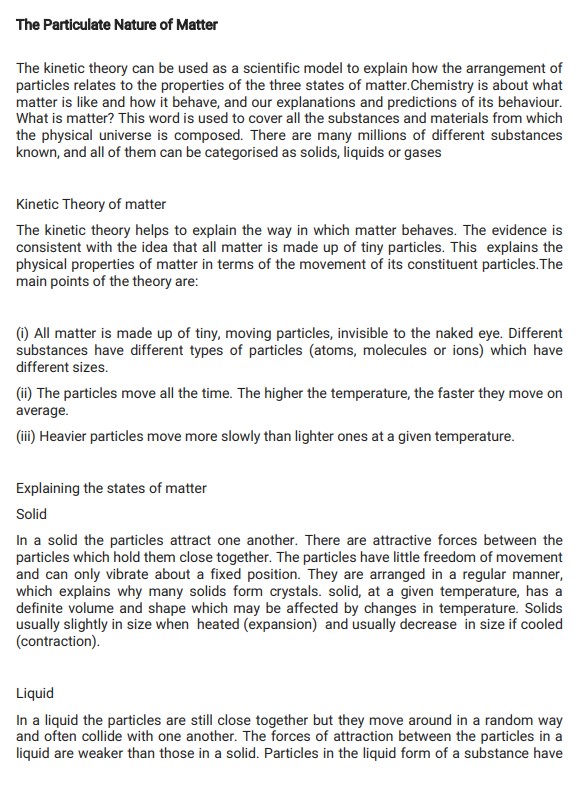The Particular Nature of Matter
Summary:
The Particular Nature of Matter note discusses the kinetic theory of matter and the properties of solids, liquids, and gases. The kinetic theory explains that all matter is composed of tiny, moving particles and that their behaviour is influenced by temperature. Solids have strong forces of attraction between particles, fixed shapes, and high densities. Liquids have weaker forces of attraction, can flow and take the shape of their container, and have moderate densities. Gases have no intermolecular forces, particles are far apart and move quickly, and they can be compressed into smaller volumes with low densities. Changes of state, such as melting, boiling, freezing, evaporation, and condensation, are also explained using the kinetic theory. Brownian motion and diffusion, which involve the random movement of particles, are discussed as well. Overall, the passage provides an overview of the kinetic theory and the behaviour of different states of matter.
Excerpt:
The Particular Nature of Matter
The kinetic theory can be used as a scientific model to explain how the arrangement of particles relates to the properties of the three states of matter. Chemistry is about what matter is like and how it behaves, and our explanations and predictions of its behaviour. What is the matter? This word covers all the substances and materials from which the physical universe is composed. There are many millions of different substances known, and all of them can be categorized as solids, liquids, or gases.
Kinetic Theory of Matter
The kinetic theory helps to explain the way in which matter behaves. The evidence is consistent with the idea that all matter comprises tiny particles. This explains the physical properties of matter in terms of the movement of its constituent particles.
The main points of the theory are:
(i) All matter comprises tiny, moving particles, invisible to the naked eye. Different substances have different types of particles (atoms, molecules, or ions) of different sizes.
(ii) The particles move all the time. The higher the temperature, the faster they move on average.
(iii) Heavier particles move more slowly than lighter ones at a given temperature.


Reviews